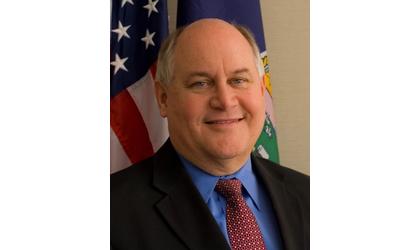Reform KPERS Now for the Future
The Kansas Public Employee Retirement System (KPERS) has been a major topic of discussion for the last several years. As your State Treasurer, I am a member of the KPERS Board. The Board has a fiduciary responsibility to manage the assets for the benefits of the members, and not to make positions on the legal structure. But as State Treasurer (and a Tier 1 KPERS member), I encourage the Legislature and the Governor to pass some necessary changes this year.
KPERS is a valuable benefit for state employees, local school employees, and most local government employees. It serves over 260,000 active and inactive members and retirees. As you have heard, KPERS is projected to be $8.3 Billion short in paying promised benefits to all current employees and retirees. But let me reassure you that KPERS has $13.5 Billion in assets (approximately 62% of what is needed) today – enough to pay benefits for all current retirees and most employees that will retire in the next 10-15 years. KPERS needs a solution that addresses two critical issues: (1) makes the system solvent for all current employees and (2) provides a stable plan for all future employees. If we don’t take action now, we are at risk of having our bond rating lowered and KPERS will consume even more of our state budget at the expense of other vital state services to Kansans in the future.
Several things have caused our retirement system to get in this condition, but the primary reason is the Legislature was given some bad advice in 1993. They were told the benefits could be raised and the contributions held low for the employers and the employees (at 4% of salary). By the late 1990’s the Legislature saw contribution levels were not high enough, and began to raise them. In order to not impact the state and local budgets too harshly they limited the annual increases. Finally, in 2009 they were forced to raise the employee contributions and created the Tier 2 level.
Even though the KPERS investments have achieved the 8% investment rate of return over the last 30 years, these changes have not been enough to adequately fund the plan.
I have followed the process in the legislature and the Study Commission very closely and provided input as the process has moved forward. Recently, the House of Representatives passed a bill that addresses these critical issues. House Substitute for Senate Bill 259 increases the contribution amount for the state and local government employers. It also sets requirements for Tier 1 and Tier 2 employees to be equal. Tier 1 employees will contribute at a 6% rate in exchange for an increase in benefits to 1.85% times each year worked. Tier 2 employees will continue to contribute 6% and will receive an increase in benefits to 1.85% times each year worked in exchange for the cost of living adjustment.
In addition, the bill creates a Tier 3 for new employees hired after 2014. These new employees would have a choice to pick a Defined Contribution (DC) Option similar to a 401(k) in private industry or a Cash Balance Option. The DC Option would allow employees to contribute 6% to their own account and make their own investment decisions. In today's world it is imperative that we give state employees the freedom and flexibility to control their retirement future.
In the Cash Balance Option, an employee contributes 6% and the employer adds up to 4%. The employee is guaranteed a 5% return as their benefit. This is an option for employees who plan a long term career with a state or local government employer.
I encourage the Legislature to pass and the Governor to sign a bill like 259. It is not the exact solution I would have preferred and I expect further changes as this process moves forward, but it provides choices for future employees and continues benefits promised to existing employees. It addresses both critical issues by not digging the hole any deeper for future employees, empowers those employees who wish to take control of their own retirement by giving them the flexibility to do so, and begins to close the existing funding gap. Significant structural KPERS reform must happen this year. Our state cannot afford to put this off yet again.
MOST VIEWED STORIES
Holton man killed in Jackson Co crash
Morrill pair arrested on drug, child endangerment charges
Falls City man sentenced to Federal Prison
Ground Broken for new Sac and Fox Trad'n Post
Local residents avoid injury in chain reaction crash
Horton City Clerk's resignation accepted Monday
Jackson Co traffic stop leads to arrest
One held for past Atchison shooting
90 mph+ downburst winds blamed for Thursday damage
Wamego man sentenced in second fentanyl-related death
Stolen trailer, 4-wheeler, recovered in Atchison
Mayetta pair arrested on meth, child endangerment charges
Effingham owner regains truck following theft, arrest
Early Thursday storms leave damage, outages, locally
Cold case investigation leads to Holton warrant
Juveniles face charges following Atchison break-in
Atchison Co's Oswald named honorary bailiff for KS Court
LATEST STORIES
Effingham owner regains truck following theft, arrest
Cold case investigation leads to Holton warrant
Senator Slama on tax relief efforts
SE Nebraska March unemployment report
Falls City Career Academy to open during 24-25 school year
Denim Day declared for Nebraska state colleges
McLouth man injured in Monday wreck
Horton City Clerk's resignation accepted Monday


 Printer Friendly
Printer Friendly
 Email to a Friend
Email to a Friend





